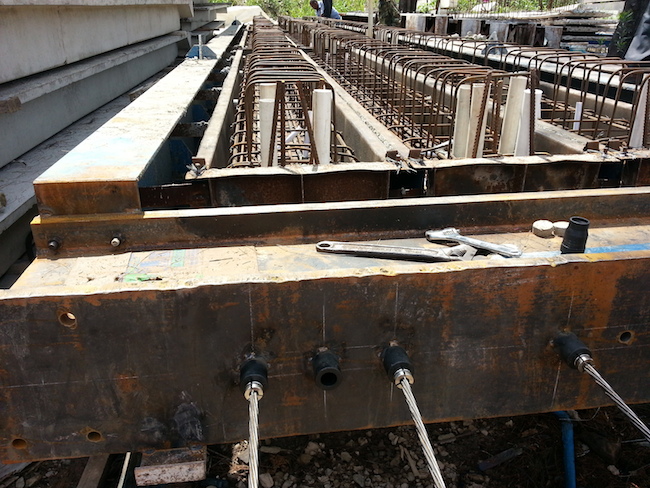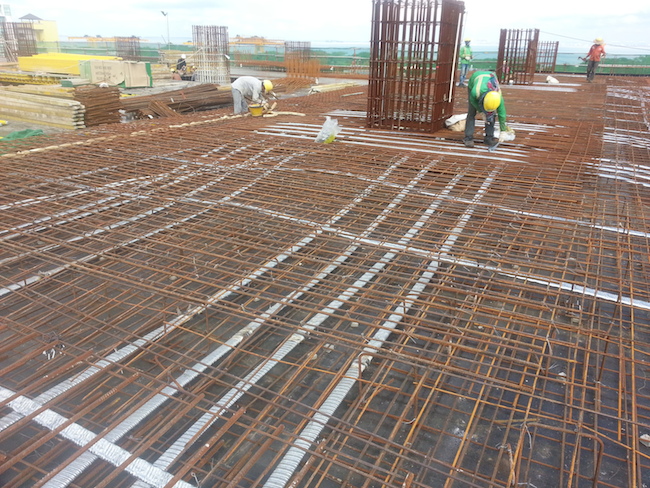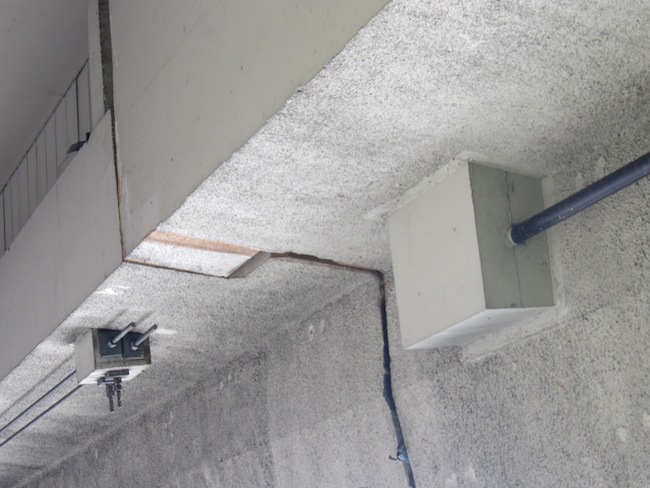Prestressing



Prestressing is the introduction of a compressive force to the concrete to counteract the stresses that will result from an applied load. There are two methods of introducing prestressing to a concrete, namely pre tensioning and post tensioning.
Pre tensioning happens before the casting of the concrete. This is done by placing of high tensile steel tendons in a desired profile in which the concrete is to be cast. When the concrete had reached the required strength, the tendons are released to introduce a compressive force to the concrete. The concrete will then be in a permanent state of maintaining prestressed strength.
Pre tensioning allows for bulk production of concrete precast products in a manufacturing facility using special casting beds. Completed concrete precast products are then transported to project site for assembly. As these concrete precast products are produced in large quantity, consistency in quality and finishing can be achieved. Most importantly, the increased in efficiency and time saving is one of the most crucial factor in construction. And this greatly reduces project site footprint. Examples of pre tensioning concrete precast products are foundation pile, railway sleeper, electrical / lighting pole, floor slab, beam, pipe, partition wall, etc. The absence of large anchors is also another key advantage.
Post tensioning is the process of introducing compressive force to the concrete after the concrete is casted. This is done by placing high tensile steel PC Strand tendons (normally inside the ducts that were casted into the concrete) in a desired profile. The tendons are then stressed and locked with anchors. This application introduces compressive force to the concrete and the concrete can then achieve its required prestressed strength.
Post tensioning is getting popular with civil constructions, example are roads, bridges, railways, tunnels, dams, containment tanks, reservoirs, underground constructions, foundations, buildings, industrial facilities, air & sea ports, special structures or any form of prestressed concrete structures etc.
Unlike pre tensioning work, post tensioning is usually carried out at a project site. The same formwork that was used to construct non-prestressed concrete, post tensioning work required little or no modifications to the formwork. Using PC strand as the prestressing steel tendon placed inside of a duct, the tendon is then placed in a desired profile to achieve maximum prestressing effect. And this is usually carried at the same time when other reinforcing member (rebar) is placed (as in the case of bonded post tensioning). Concrete is then casted and allowed to cure. Once the concrete has cured to reach a predetermined strength, the PC strand is then tensioned using Stressing Jack and Stressing Pump. And locked into prestressed condition with the help of anchors. Excess PC strand is then cut away and the duct will be grouted and covered with concrete for rust prevention. Post tensioning allows builders to achieve many advantages and yet maintaining the freedom of constructing structures in any shape or configuration imaginable.
These days sustainable development requires developers to strike a balance between business economic sense and their social and environmental responsibilities. The focus on safety, lesser materials, reduced energy consumption, lower pollution and waste, and better utilization of recyclable materials are the guiding principles towards a greener and more sustainable living environment.
